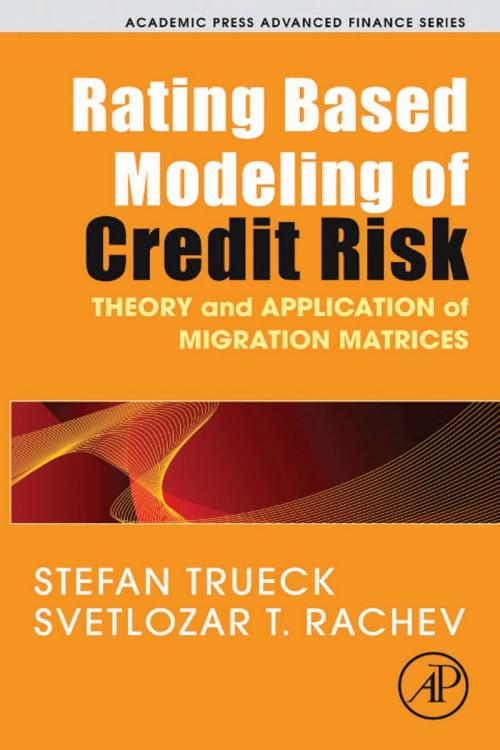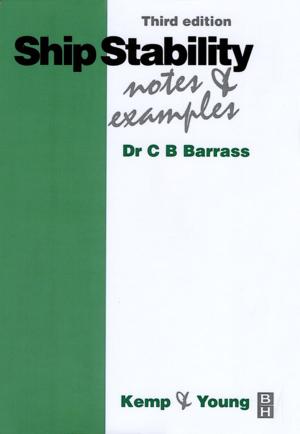Rating Based Modeling of Credit Risk
Theory and Application of Migration Matrices
Business & Finance, Finance & Investing, Banks & Banking, Personal Finance, Money Management| Author: | Stefan Trueck, Svetlozar T. Rachev | ISBN: | 9780080920306 |
| Publisher: | Elsevier Science | Publication: | January 15, 2009 |
| Imprint: | Academic Press | Language: | English |
| Author: | Stefan Trueck, Svetlozar T. Rachev |
| ISBN: | 9780080920306 |
| Publisher: | Elsevier Science |
| Publication: | January 15, 2009 |
| Imprint: | Academic Press |
| Language: | English |
In the last decade rating-based models have become very popular in credit risk management. These systems use the rating of a company as the decisive variable to evaluate the default risk of a bond or loan. The popularity is due to the straightforwardness of the approach, and to the upcoming new capital accord (Basel II), which allows banks to base their capital requirements on internal as well as external rating systems. Because of this, sophisticated credit risk models are being developed or demanded by banks to assess the risk of their credit portfolio better by recognizing the different underlying sources of risk. As a consequence, not only default probabilities for certain rating categories but also the probabilities of moving from one rating state to another are important issues in such models for risk management and pricing.
It is widely accepted that rating migrations and default probabilities show significant variations through time due to macroeconomics conditions or the business cycle. These changes in migration behavior may have a substantial impact on the value-at-risk (VAR) of a credit portfolio or the prices of credit derivatives such as collateralized debt obligations (D+CDOs). In Rating Based Modeling of Credit Risk the authors develop a much more sophisticated analysis of migration behavior. Their contribution of more sophisticated techniques to measure and forecast changes in migration behavior as well as determining adequate estimators for transition matrices is a major contribution to rating based credit modeling.
- Internal ratings-based systems are widely used in banks to calculate their value-at-risk (VAR) in order to determine their capital requirements for loan and bond portfolios under Basel II
- One aspect of these ratings systems is credit migrations, addressed in a systematic and comprehensive way for the first time in this book
- The book is based on in-depth work by Trueck and Rachev
In the last decade rating-based models have become very popular in credit risk management. These systems use the rating of a company as the decisive variable to evaluate the default risk of a bond or loan. The popularity is due to the straightforwardness of the approach, and to the upcoming new capital accord (Basel II), which allows banks to base their capital requirements on internal as well as external rating systems. Because of this, sophisticated credit risk models are being developed or demanded by banks to assess the risk of their credit portfolio better by recognizing the different underlying sources of risk. As a consequence, not only default probabilities for certain rating categories but also the probabilities of moving from one rating state to another are important issues in such models for risk management and pricing.
It is widely accepted that rating migrations and default probabilities show significant variations through time due to macroeconomics conditions or the business cycle. These changes in migration behavior may have a substantial impact on the value-at-risk (VAR) of a credit portfolio or the prices of credit derivatives such as collateralized debt obligations (D+CDOs). In Rating Based Modeling of Credit Risk the authors develop a much more sophisticated analysis of migration behavior. Their contribution of more sophisticated techniques to measure and forecast changes in migration behavior as well as determining adequate estimators for transition matrices is a major contribution to rating based credit modeling.
- Internal ratings-based systems are widely used in banks to calculate their value-at-risk (VAR) in order to determine their capital requirements for loan and bond portfolios under Basel II
- One aspect of these ratings systems is credit migrations, addressed in a systematic and comprehensive way for the first time in this book
- The book is based on in-depth work by Trueck and Rachev















